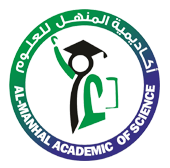Vision and Mission
In order to implement and coordinate the programs of the Academy, the management of the Academy developed a strategic plan for ten years. It included the vision, mission, values and programs that meet the aspiration of the academy’s administrators, workers, employees, administrators and faculty members. As a model of what is stated below:
Vision
Towards a scientific academy that contributes to the promotion of society in its various programs.
The message
To carry out the scientific, financial and administrative duties which summarize the teaching, the promotion of scientific research, and the service of society.
Value
Faith, honesty, justice, consultation, partnership, transparency, dialogue and partnership, respect for the human being and the preservation of his dignity.
strategic goals
The strategy includes three strategic objectives:
Teaching: To graduate the student with the correct education and useful science to a trainee professor and expert.
Scientific Research: Enhancing scientific research to serve the country and the people, solve problems and push forward the development on scientific grounds.
Community service: knowledge, culture and comprehensive development to promote the community.
Software
Selection of elites capable of teaching different materials with clear visions in the promotion of students and the supply of labor market required, and programs include teacher training on the latest methods of teaching and technology.
- Review curriculum every four years to keep abreast of development and benefit from modern technology.
- Developing the interaction by creating activity inside and outside the hall.
- Enhancement and consolidation of the intellectual curriculum and skills development, as follows:
First, to produce in-depth research in various scientific subjects and disciplines that benefit the nation in all its various fields and disciplines.
Second, mastering the programs in which the Academy works in order to increase the program.
Thirdly, the transfer of experiences and utilization of human production in different types of knowledge, especially that contribute to the promotion and improvement of the programs of the Academy.
 Manhal Almanhal Academic for sciences
Manhal Almanhal Academic for sciences
